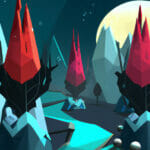Welcome to this exploration of Roblox animation scripting! This rich programming skill allows you to breathe life into your Roblox games, creating dynamic and immersive experiences that players are sure to enjoy. Whether you’re new to coding or you’re honing your abilities, this article offers a raft of concrete examples and explanations, drawing on simple game mechanics to bring these concepts into vivid focus.
Table of contents
What is Roblox Animation Scripting?
Roblox animation scripting leverages the Lua programming language to create sophisticated motions for in-game characters, items, and other objects. This scripting language is easy to learn yet highly powerful, with the potential to transform your 3D environments and inject them with vibrancy and life.
Why Learn Roblox Animation Scripting?
Mastering animation scripting has a world of benefits. Firstly, this skill makes your games more engaging, as players can interact with your universe in clear and compelling ways. Additionally, understanding the nuances of animation scripting is a valuable skill in game development, potentially opening doors to exciting future projects. Lastly, the power of scripting lies in its adaptability. Once you’ve grasped the basics, you can apply your knowledge to create anything from simple games to complex, layered experiences.
We promise you an enriching journey as you delve into the fascinating world of Roblox animation scripting. Let’s get started!
Basic Principles of Animation Scripting
Let’s kick off with the foundation of animation scripting. We’ll start with a simple example – making an in-game object move.
local part = game.Workspace.Part
local movement = Vector3.new(0, 20, 0)
while wait(0.5) do
part.Position = part.Position + movement
endIn the above script, we use a while loop to continuously change the position of a chosen part in your game. This represents a basic form of animation.
Creating More Complex Motions
Next, let’s dive deeper to understand how we can create more complex movements.
local humanoid = script.Parent:FindFirstChild("Humanoid")
if humanoid then
local animation = Instance.new("Animation")
animation.AnimationId = "rbxassetid://your_animation_id"
local playingAnimation = humanoid:LoadAnimation(animation)
playingAnimation:Play()
endIn the script above, we load an existing animation and apply it to a humanoid object in the game. This showcases the application of animation scripting to animate characters in your game.
At Zenva, our aim is to make learning more accessible and engaging. We believe that anyone can learn to code and create games with enough practice and the right resources. Our Roblox Mini-Degree offers in-depth tutorials and lessons on coding, game creation, and other crucial skills for both beginners and more experienced programmers. Get started on your coding journey here.
Conclusion
In this tutorial, we’ve scratched the surface of the powerful world of Roblox animation scripting. We’ve learned how to create simple movements and apply more complex animations to our in-game characters, and explored the reasons why learning this skill can add so much value to your game development journey.
Remember, each line of code you write takes you one step closer to becoming a proficient programmer. We hope this tutorial sparked your interest in learning more about animation scripting. For those keen to continue this journey, Zenva’s Roblox Mini-Degree is an excellent resource. Come join us and let’s push the boundaries of what’s possible in game development. Explore our Roblox Mini-Degree here. Happy coding!
Animating Objects with Scripts
After understanding the basics, let’s dive into how we can make objects move in specific ways using scripting.
local part = game.Workspace.Part
while wait(1) do
part.CFrame = part.CFrame * CFrame.Angles(0, math.rad(90), 0)
endThis script rotates a part in the workspace 90 degrees around the Y-axis every second.
Animating Characters with Scripts
Not only objects, but we can also animate characters in our game with simple scripts. Consider the following example:
local humanoid = script.Parent:FindFirstChild("Humanoid")
if humanoid then
local animation = Instance.new("Animation")
animation.AnimationId = "rbxassetid://your_animation_id"
local playingAnimation = humanoid:LoadAnimation(animation)
playingAnimation:Play()
endThe script above creates an instance of an animation, loads it to a humanoid character and plays the animation.
Controlling Animation Speed
This is a key aspect of animation scripting. We can control the speed of animation just by few lines of code.
local humanoid = script.Parent:FindFirstChild("Humanoid")
if humanoid then
local animation = Instance.new("Animation")
animation.AnimationId = "rbxassetid://your_animation_id"
local playingAnimation = humanoid:LoadAnimation(animation)
playingAnimation:AdjustSpeed(0.5)
playingAnimation:Play()
endThe script above does the same thing as the previous example with one added feature: it adjusts the speed of the animation to 0.5 times the original speed before playing.
Transition Between Animations
It’s also possible to transition smoothly from one animation to another. Look at the following example:
local humanoid = script.Parent:FindFirstChild("Humanoid")
if humanoid then
local animation1 = Instance.new("Animation")
animation1.AnimationId = "rbxassetid://your_animation_id1"
local playingAnimation = humanoid:LoadAnimation(animation1)
playingAnimation:Play()
if playingAnimation.IsPlaying then
wait(2)
local animation2 = Instance.new("Animation")
animation2.AnimationId = "rbxassetid://your_animation_id2"
local newAnimation = humanoid:LoadAnimation(animation2)
humanoid:PlayAnimation(newAnimation, 0.2)
end
endThis script starts playing one animation, waits for 2 seconds, and then smoothly transitions to another animation. The second argument to the `PlayAnimation` function is the transition time in seconds.
These are just a few of the infinite possibilities you have when it comes to animating objects and characters in Roblox. As you delve deeper into scripting, you’ll discover even more advanced and sophisticated techniques to bring your game world to life.
Utilizing Pre-existing Roblox Animations
Roblox has a rich library of animations that you can use in your game. You simply need to know the animation ID. For example, to use the “Zombie Dance” animation, you would use the following script:
local humanoid = script.Parent:FindFirstChild("Humanoid")
if humanoid then
local animation = Instance.new("Animation")
animation.AnimationId = "rbxassetid://148840371"
local playingAnimation = humanoid:LoadAnimation(animation)
playingAnimation:Play()
endThis script assigns the specified animation to the humanoid and plays it.
Manipulating Character Properties
You can manipulate various properties of an animation to further customize them. In addition to adjusting speed, you can modify the weight of an animation.
local humanoid = script.Parent:FindFirstChild("Humanoid")
if humanoid then
local animation = Instance.new("Animation")
animation.AnimationId = "rbxassetid://your_animation_id"
local playingAnimation = humanoid:LoadAnimation(animation)
playingAnimation.Weight = 0.5
playingAnimation:Play()
endThis script sets the weight of the animation to 50% before playing it. This allows the animation to blend with others that might be playing at the same time.
Animate on Command
You can also set up your script to play animations based on player input or specific game events. Let’s animate a humanoid to wave when commanded.
function waveOnCommand(player)
local character = player.Character
local humanoid = character:FindFirstChild("Humanoid")
if humanoid then
local animation = Instance.new("Animation")
animation.AnimationId = "rbxassetid://your_animation_id"
local playingAnimation = humanoid:LoadAnimation(animation)
playingAnimation:Play()
end
end
game.Players.PlayerAdded:Connect(function(player)
player.Chatted:Connect(function(message)
if message == "!wave" then
waveOnCommand(player)
end
end)
end)In this example, when a player chats the message “!wave”, the chosen animation is played.
Conclusion
With the understanding of these fundamental concepts and examples, you can start building dynamic movements in your Roblox games. At Zenva, we believe in crafting engaging game experiences and providing educational resources to be the leaders in the game development world. Further your learning journey by checking out our Roblox Mini-Degree today. Happy coding!
Advanced Animation Techniques
For more intricate animations, we can layer different movements. Let’s create a humanoid that waves while spinning.
local humanoid = script.Parent:FindFirstChild("Humanoid")
if humanoid then
-- Load the wave animation
local waveAnimation = Instance.new("Animation")
waveAnimation.AnimationId = "rbxassetid://your_wave_animation_id"
local playingWaveAnimation = humanoid:LoadAnimation(waveAnimation)
-- Load the spin animation
local spinAnimation = Instance.new("Animation")
spinAnimation.AnimationId = "rbxassetid://your_spin_animation_id"
local playingSpinAnimation = humanoid:LoadAnimation(spinAnimation)
-- Play the animations
playingWaveAnimation:Play()
playingSpinAnimation:Play()
endThis script loads two animations onto a humanoid and plays them at the same time.
Interrupting Animations
Animation interruption is useful when you want to stop a current animation and switch to a different animation. Here’s how you do it:
local humanoid = script.Parent:FindFirstChild("Humanoid")
if humanoid then
local animation = Instance.new("Animation")
animation.AnimationId = "rbxassetid://your_animation_id"
local playingAnimation = humanoid:LoadAnimation(animation)
playingAnimation:Play()
wait(2) -- Wait for 2 seconds
playingAnimation:Stop() -- Stop the current animation
endThis script stops an ongoing animation after 2 seconds of its initiation.
Let’s go one step further and replace the stopped animation with a new one:
local humanoid = script.Parent:FindFirstChild("Humanoid")
if humanoid then
local animation1 = Instance.new("Animation")
animation1.AnimationId = "rbxassetid://your_animation_id1"
local playingAnimation1 = humanoid:LoadAnimation(animation1)
playingAnimation1:Play()
wait(2) -- Wait for 2 seconds
playingAnimation1:Stop() -- Stop the first animation
-- Start a new animation
local animation2 = Instance.new("Animation")
animation2.AnimationId = "rbxassetid://your_animation_id2"
local playingAnimation2 = humanoid:LoadAnimation(animation2)
playingAnimation2:Play() -- Play the second animation
endIn the above script, after 2 seconds, the first animation is stopped and a second animation begins playing.
Triggering Animations on Collision
For an even more interactive experience, you can trigger animations based on in-game events such as collisions.
function onPartTouched(otherPart)
local humanoid = otherPart.Parent:FindFirstChild("Humanoid")
if humanoid then
local animation = Instance.new("Animation")
animation.AnimationId = "rbxassetid://your_animation_id"
local playingAnimation = humanoid:LoadAnimation(animation)
playingAnimation:Play()
end
end
game.Workspace.Part.Touched:Connect(onPartTouched)Here, whenever a humanoid touches the specified part, the associated animation script launches.
Remember, practice is the key to learning animation scripting. The more you experiment with different properties and scenarios, the more comfortable and creative you will become in bringing your game ideas to life. Don’t shy away from trial and error—it’s all part of the learning experience! With each script you write, you move one step closer to mastering Roblox animation scripting.
Where to Go Next
With the foundation laid through this tutorial, you’re now prepared to dive deeper into the rich world of Roblox Animation Scripting. Your journey in learning and mastering this skill doesn’t stop here. There’s plenty more to learn and apply in creating even more engaging virtual universes.
We highly recommend you to check out our Roblox Mini-Degree. This collection of comprehensive courses involves game creation using Roblox Studio and Lua, covering various game genres from obstacle courses to first-person shooter games. Regardless of your skill level, this Mini-Degree offers an engaging and flexible learning pathway to bolster your understanding of Roblox game development.
For more Roblox-related content, feel free to explore our Roblox section. With a wide range of engaging courses to choose from, Zenva ensures a consistent learning experience from beginner level to professional levels in programming, game development, and AI.
Remember – practice, learn, iterate, and keep gaming! Happy coding.
Conclusion
We hope this guide has provided you with a solid foundation in Roblox animation scripting. With these fundamentals under your belt, you’re now equipped to create more dynamic, engaging, and interactive games. Every line of code you write brings you one step closer to becoming a versatile game developer.
Remember, the journey of learning never ends. Continue honing your skills with us through our expansive Roblox Mini-Degree. This comprehensive suite of courses will not only deepen your understanding of Roblox animation scripting, but it will also introduce you to numerous other facets of game development. After all, gaming isn’t just about playing—it’s about creating new worlds, stories, and experiences. So dive in, and let’s create something fantastic together!
Did you come across any errors in this tutorial? Please let us know by completing this form and we’ll look into it!

FINAL DAYS: Unlock coding courses in Unity, Godot, Unreal, Python and more.







